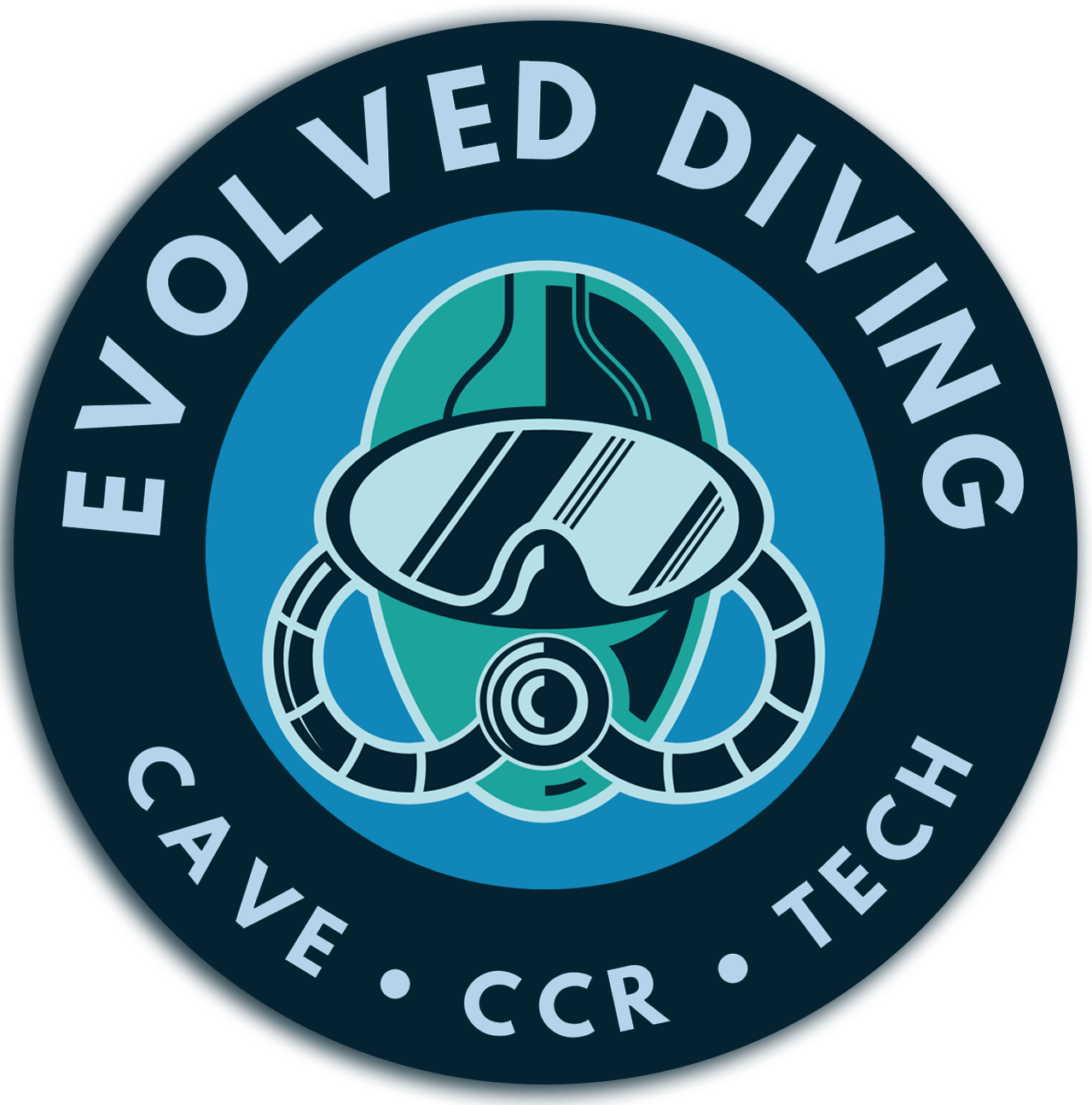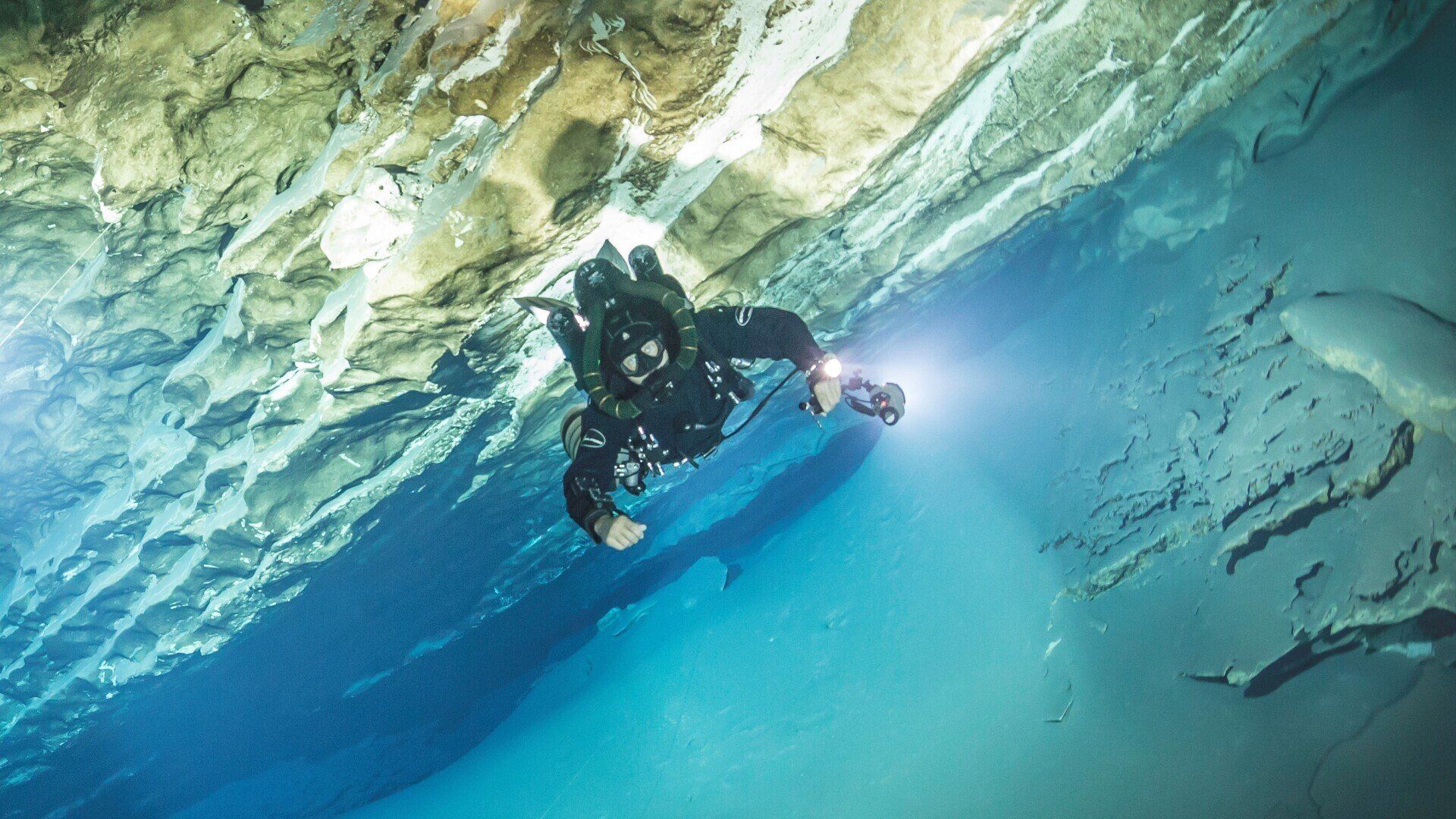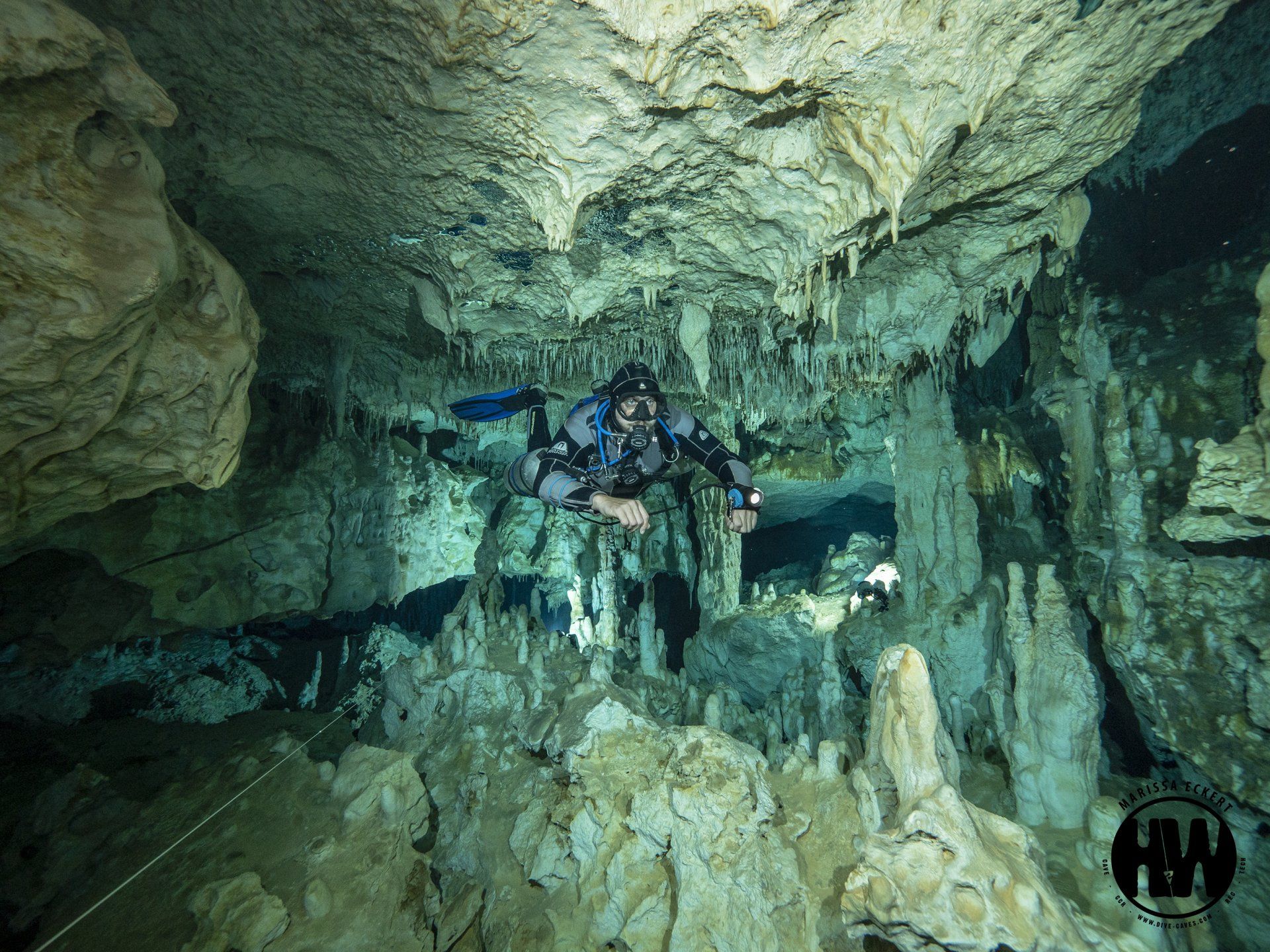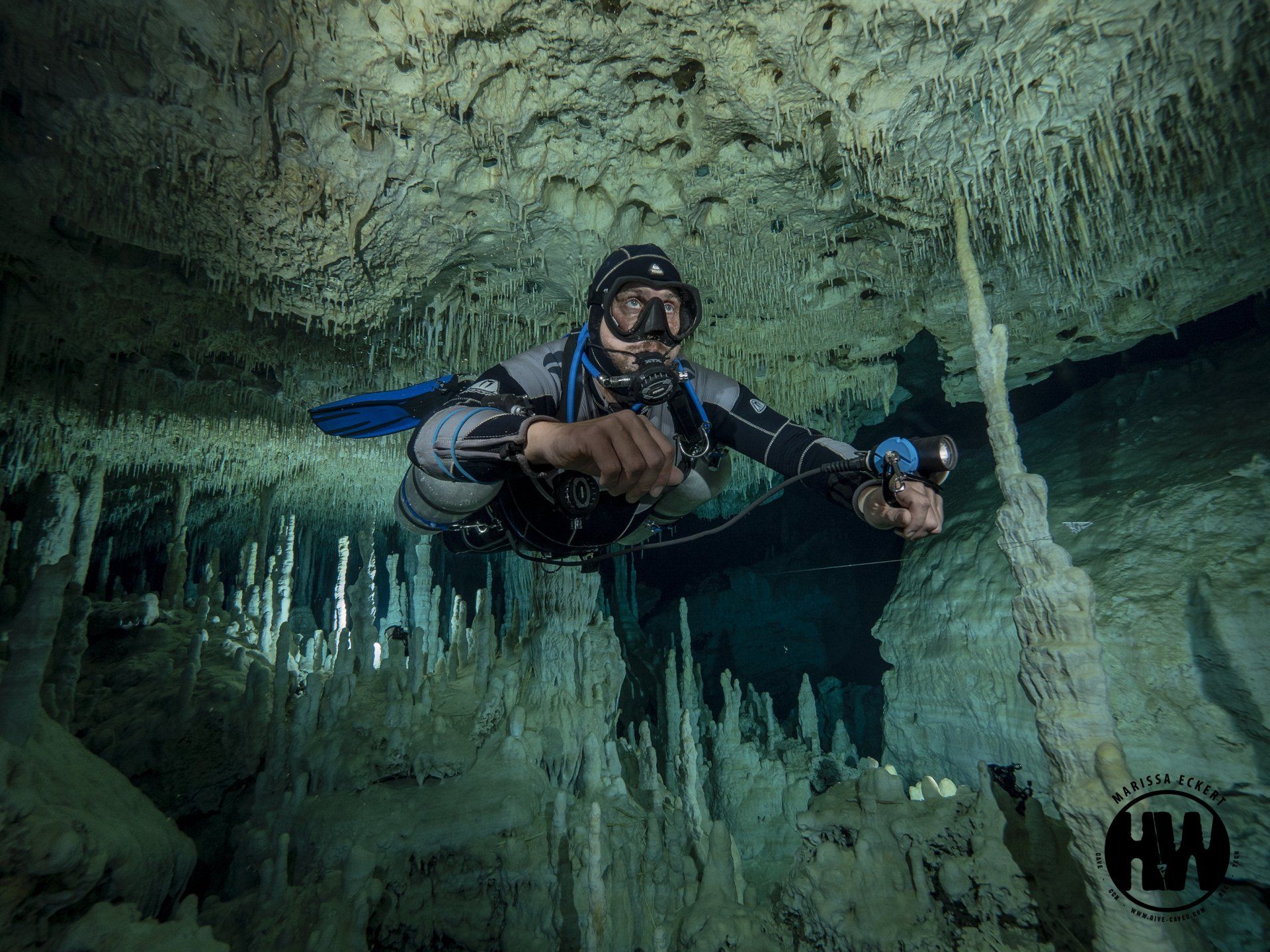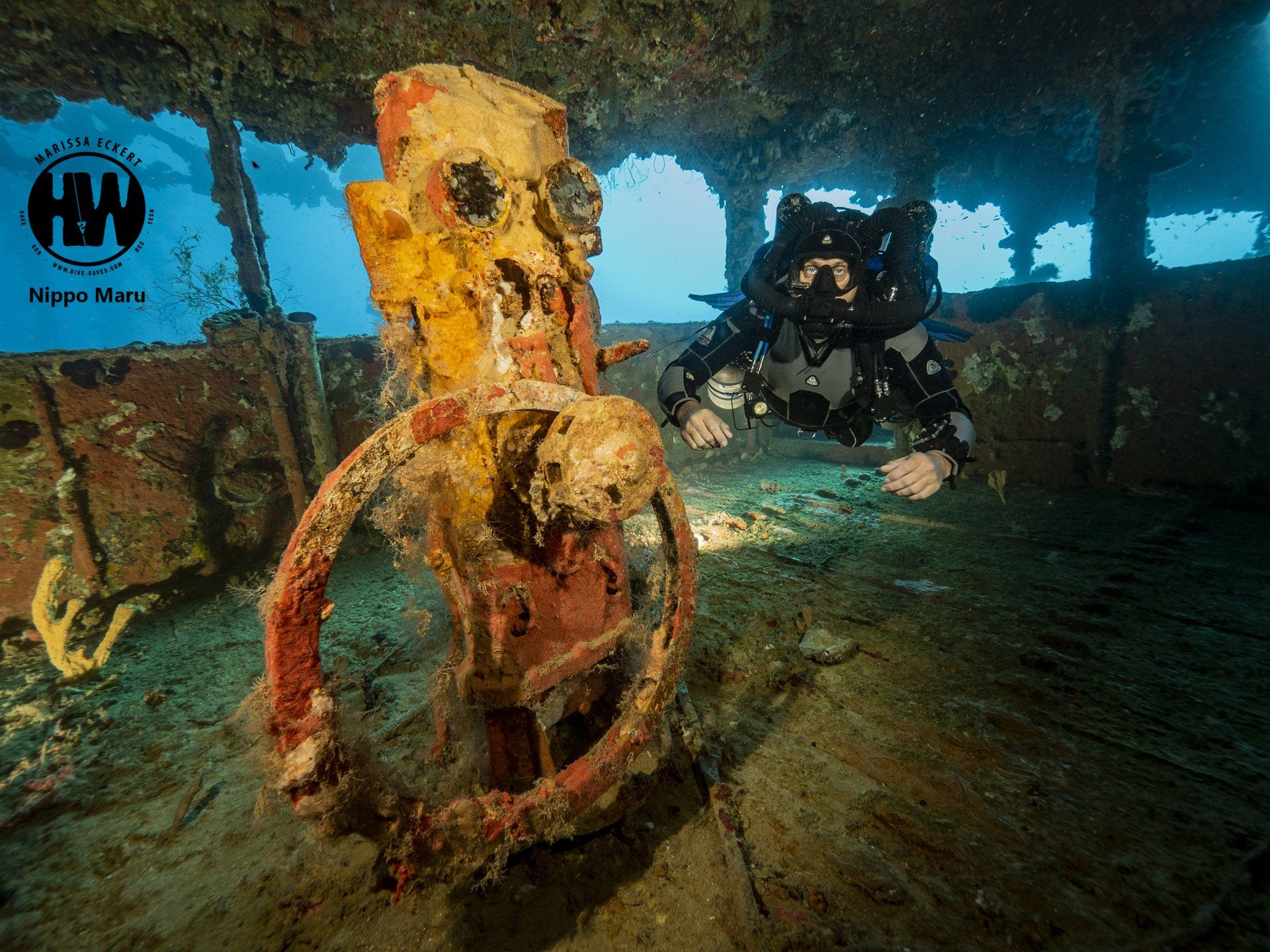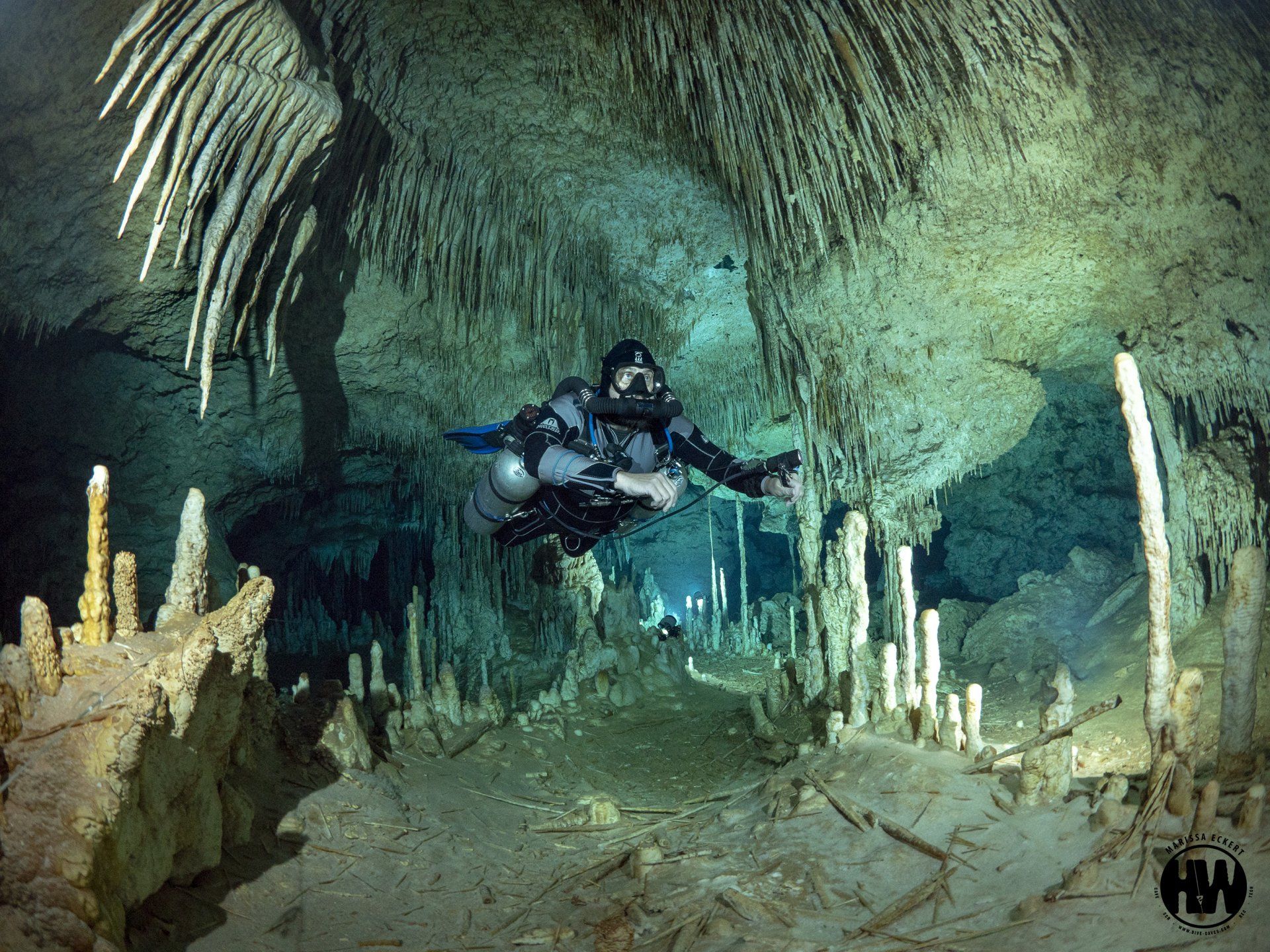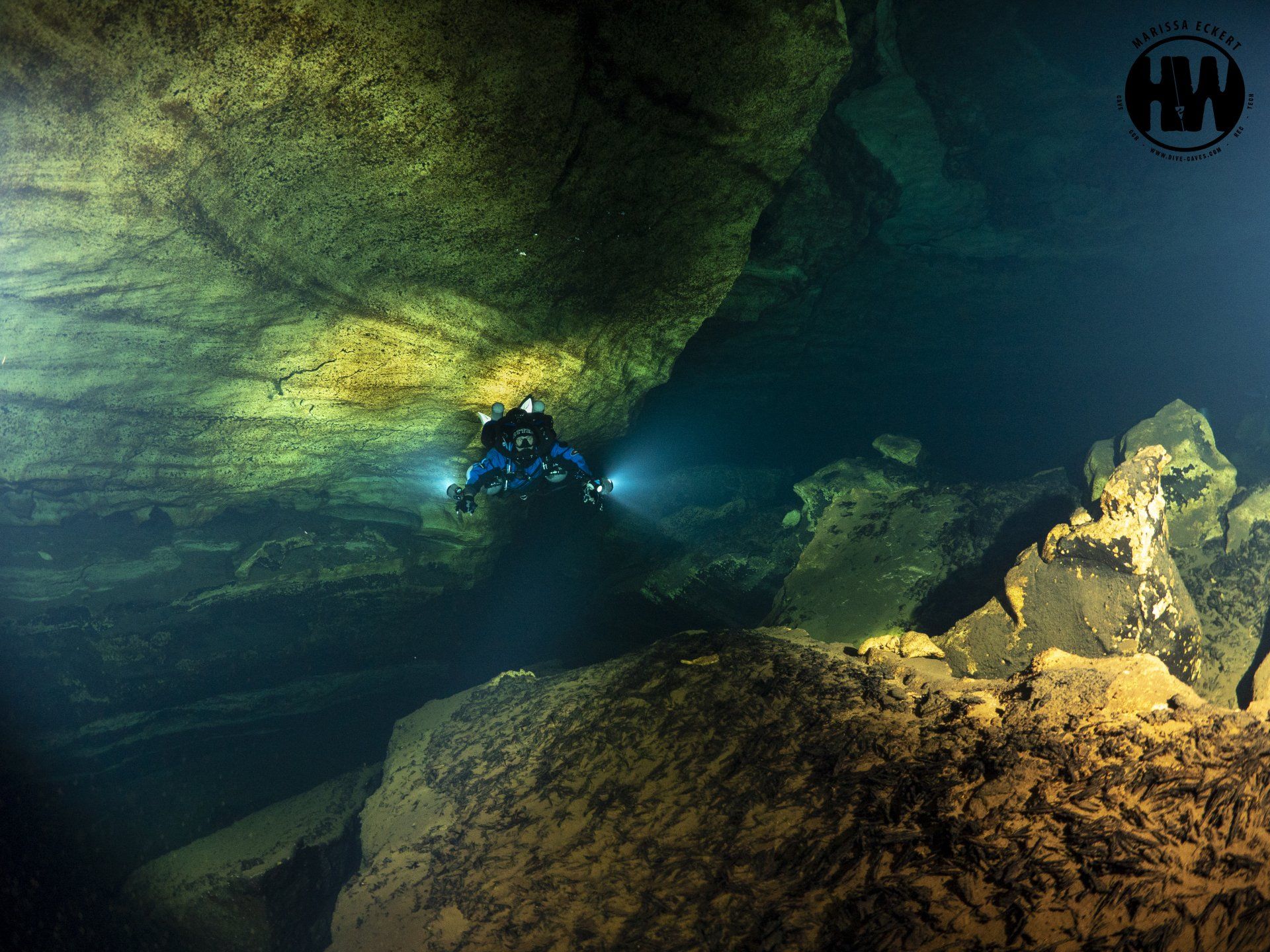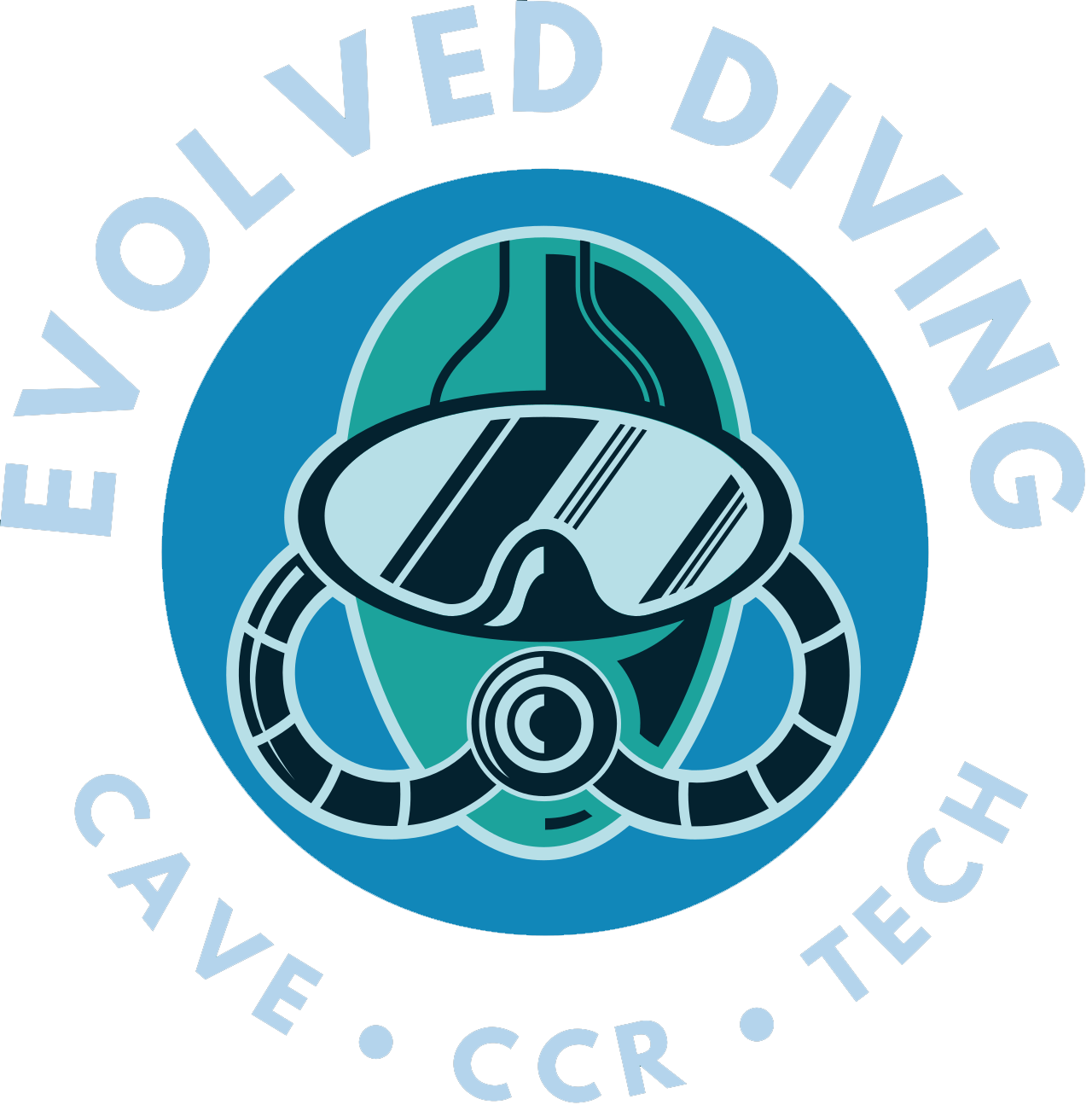Rebreather
As an avid rebreather diver with over a decade of rebreather experience, James is familiar with a variety of different rebreathers and certified to dive 12 different units, and actively teaches on some of the most reliable and robust units available. If you're looking for training on the XCCR, Meg, Tiburon, Prism2, Sidewinder, Defender, Sidekick or SF2, we can help.
WE OFFER ALL LEVELS OF Rebreather TRAINING TO INCLUDE
-
Air DIL
Air DIL Diver
This course is for the certified diver looking to advance their diver level training and equipment configurations by learning to dive a rebreather. Whether you are an avid photographer, want to experience the silence of diving a rebreather, or looking to get closer to the marine life – rebreather diving is for you.
What’s in it for you?
Upon successful completion of this course, graduates may engage in diving activities utilizing the CCR they were trained to dive without direct supervision of the TDI Instructor so long as the following limits are adhered to:
- The diving activities approximate those of training
- The areas of activities approximate those of training
- Environmental conditions approximate those of training
- To a maximum depth of 30 meters/100 feet
- No decompression dives are permitted
-
Air DIL Deco
Air Diluent Decompression Procedures Diver
Are you an open circuit technical diver looking to cross over to the “silent” side? Or maybe you are a CCR Air Diluent Diver looking to progress to the next level? Either way, our CCR Air Diluent Decompression Course is the next step. Using the latest technology in CCR’s can maximize your gas supply and provide an optimum breathing gas for any depth by maintaining a constant partial pressure of oxygen. Like having a blending station on your back, a CCR is the ultimate tool for technical divers.
During this course, we will teach you all of the necessary skills to conduct decompression CCR dives to a maximum depth of 40 meters/130 feet using air diluent.
What’s in it for you?
Upon successful completion of this course, graduates may engage in decompression diving activities utilizing the CCR they were trained to dive with, without direct supervision of the TDI Instructor so long as the following limits are adhered to:
- The diving activities approximate those of training
- The areas of activities approximate those of training
- Environmental conditions approximate those of training
- To a maximum depth of 40 meters/130 feet
- Utilizing air diluent
-
CCR Helitrox (45m)
CCR Helitrox Decompression Procedures Diver
This is the second level certification course for divers wishing to utilize a Closed-Circuit Rebreather (CCR) for mixed gas diving using a Helitrox Diluent. The objective of the course is to train divers in the benefits, hazards and proper procedures for diving a CCR and to develop basic CCR diving skills, to a maximum of 45 meters/150 feet, using an air/nitrox/helium diluent for formal decompression diving. Students are permitted to utilize a diluent and bailout mix with no greater than a 35% helium content and no less than a 21% oxygen content, and are permitted to use up to 100% oxygen for decompression.
What’s in it for you?
Upon successful completion of this course, graduates may engage in decompression diving activities utilizing a CCR without direct supervision provided:
- The diving activities approximate those of training
- The areas of activities approximate those of training
- Environmental conditions approximate those of training
-
Mixed Gas (60m)
CCR Mixed Gas Diver
As a CCR Air Diluent Decompression or Helitrox Diluent Decompression Diver, the Mixed Gas CCR Diver course is your next step into closed circuit rebreather diving; it is your opportunity to explore a little deeper. Using the latest in technology CCR’s maximize your gas supply and provide the optimum breathing gas for any depth by maintaining a constant partial pressure of oxygen (PPO2). During the dives your we will teach you all the necessary skills to conduct CCR dives utilizing helium as a diluent gas and oxygen levels as low as 16 percent to a maximum depth of 60 meters/200 feet.
What’s in it for you?
Upon successful completion of this course, graduates may engage in technical diving activities utilizing the unit specific CCR to a maximum of 60 meters / 200 feet, utilizing a mixed gas diluent containing 16 percent or greater oxygen provided:
- The diving activities approximate those of training
- The areas of activities approximate those of training
- Environmental conditions approximate those of training
- Ability to enroll in TDI Advanced Mixed Gas CCR Diver course
-
Advanced Mixed Gas (100m)
Advanced Mix Gas Closed Circuit Rebreather Diver
The highest level of Closed-Circuit Rebreather (CCR) training that we offer, the Advanced Mixed Gas Course will teach you how to use the full capabilities of a CCR. With a maximum depth of 100 meters/330 feet, this course opens up a whole new realm of diving including new wrecks, caves and walls to explore in depths you previously could not reach on a rebreather. This intensive course conducted over seven dives will focus on all the elements needed to plan and execute dives to these depths.
What’s in it for you?
Upon successful completion of this course, graduates may engage in technical diving activities utilizing the unit specific CCR to a maximum depth of 100 meters/330 feet utilizing any mixed gas diluent appropriate to the dive plan provided:
- The diving activities approximate those of training
- The areas of activities approximate those of training
- Environmental conditions approximate those of training
How It Works
Unlike open circuit systems, closed circuit rebreathers “recycle” the air you breath, allowing you to expand your range and stay under longer. A CCR certification is ideal for divers who want to start exploring caves and tunnels — places beyond the reach of traditional open circuit diving.
CHOOSING YOUR REBREATHER
At Evolved Diving, we dive and instruct on some of the most robust and advanced rebreathers available. We understand that there are many options and we're happy to introduce you to a wide variety of today's most sought after units.
Choosing your first (or next) rebreather is no easy task, let us help guide you in the right direction.
Here are some of the various types of rebreather units we teach on:
-
Subgravity XCCR
Subgravity XCCR
The X-CCR, designed and built by iQsub and distributed by SubGravity, is the latest in cutting edge rebreather technology. With CO2 monitoring and high-pressure sensors displaying diluent and O2 pressure on the primary handset, the X-CCR sets a new standard for the industry. The standard unit includes a radial scrubber, Shrimp bailout valve (BOV), removable O2 cell cartridge, QuickLoc attachments on all breathing hoses and on the BOV. Manual Addition Valves (MAVs) for both O2 and diluent, Automatic Diluent Valve (ADV), bayonet head fitting, 3 liter steel O2 and DIL tanks, choice of Back Mounted Counter Lungs (BMCLs) or Over the Shoulder Counter Lungs (OTSCLs), back plate, harness and wing, primary and secondary handsets, HUD, Metal Sub tank brackets, first stage regulators, and 3 O2 cells are all included as standard equipment. The electronics package consists of the X-CCR primary handset, which interacts with the controller and main electronics package residing in the head of the unit (outside the loop). A bright OLED screen makes it easy to read in varying conditions and includes a digital compass. The HUD is a 3 LED configuration including an easy to see buddy light on the reverse side. The secondary handset (a Shearwater Petrel 2 or Heinrichs Wiekamp OTSC) is a redundant PO2 display as well as provides decompression information.
-
Subgravity Defender
Subgravity Defender
The Defender is an enhanced version of our world-famous rebreather. It comes fully loaded with a full range of new features. Available as a complete unit or as an upgrade to existing units. The Defender utilizes the SG-1 electronics package to maintain the set point and control the solenoid. The standard unit includes a radial scrubber, Shrimp BOV, removable O2 cell cartridge, Quick Loc attachments on all breathing hoses and at the BOV. MAVs for both O2 and DIL, bayonet head fitting, 3 liter O2 and DIL tanks, choice of BMCLs or OTSCLs, backplate, and wing, primary and secondary handsets, HUD, Metal Sub tank brackets, first stage regulators, and 3 O2 cells.
Electronic package comes standard with SG-1 electronics as a primary with hi-rez, color TFT screen. Secondary handset such as Shearwater Petrel, Heinrich Weikamp OSTC or other constant PO2 computer offers redundant PO2 monitoring.
All cables connecting to the head of the Defender CCR connect with an industrial grade, stainless steel water blocked connector rated for 5000 connections.
-
Hollis Prism 2
Hollis Prism 2
The Prism 2 is a fully closed-circuit Rebreather, ideal for exploring open ocean, caves, or wrecks. This unit can be electronically or manually controlled which means you choose how you want the loop PPO2 maintained.
Includes option of front-mounted counterlungs or back-mounted counterlungs. Combined with the rear mounted radial scrubber, the Prism 2 provides easy breathing with low resistive effort and low hydrostatic loading. The Prism 2 has also been tested by ANSTI at 100M and has the lowest WOB of any mixed gas CCR on the market. The standard kit includes an electronic secondary control and primary LED displays with a backplate/wing assembly that provides a complete kit ready to dive out of the box. Tanks and valves are purchased separately.
-
ISC Tiburon
ISC Tiburon
The ISC Tiburon CCR™ system is the accumulation of years of design validation of the ISC Megalodon breathing loop and the Popular Shearwater DiveCAN® electronics system. The Tiburon electronics head is a modular system that allows the end user to add features of instantaneous field repairs.
• Proven ruggedness and tested over 18 years of manufacturing and U.S. Navy tested and CE approved breathing loop and framework.
• ISC modular design. The Tiburon can use any standard back plate, harness, and BCD.
• Travel friendly sizes that easily fit in the overhead of most aircraft.
• Over the shoulder Minnow lungs. System may be retrofitted with other counter lung options.
• Breathing loop recoverable breathing hose and water expulsion valve.
• Tee pieces with water trap partitions, to divert water away from diver and reduce the chance of accidental caustic cocktail.
• Water trap and moisture pads in gas plenum canister.
• Integrated water traps and water and gas expulsion valve in counter lungs.
• Standard issued Cave gas plenum canister with ISC shadow mounts and welded solid bottom plate. (No plastic bottom). 5.5lb/2.49 kg ISC Radial or the 8.0lb/3.62 kg ISC radial with moisture trap.
• Optional gas plenum canister size is the Mini Meg canister with ISC shadow mounts, 5.5lb/2.49 kg Radial CO2 canister with moisture trap.
• Shearwater DiveCAN® electronics head with modular pressure proof electronics and battery boxes. User may remove system electronics and perform field repair or easily ship electronics back to ISC or Shearwater repair facilities.
• Plug and play displays and devices for use upgrades and repairs.
-
ScubaForce SF2
ScubaForce SF2
The vision became mission and finally reality. This is evident at first sight: The SF2 is configured very cleanly and simply. Compared to other rebreathers, the SF2 is compact and well-arranged. The reason: All important components are integrated into the carbon fiber tube. Therefore, the SF2 needs significantly less volume compared to other rebreathers. Tests, as well as various certifications, assure a constant level of security while diving. The SF2 is especially suitable for ambitious technical dives. It is available as either a backmount or sidemount rebreather.
Streamlined Design
As if it were designed from one piece, the SF2 is shaped cleanly and simply. Moreover, the carbon fiber tube gives the SF2 a new, streamlined and high-quality design.
Easily Built
The assembly and disassembly of the SF2 is very simple as the entire tube can be removed and all the internal parts easily reached.
Compact Installation
The electronic chamber is located within the head. The adapters of the breathing hoses are mounted at a slight angle on the head. This leads to a perfect positioning of the unit, as well as being, incredibly comfortable.
The scrubber canister is located between the head and midsection. Concerning the midsection, two different requirements of modern rebreathers are combined. First, you can find the bypass (ADV) which provides gas in case of low volume in the system. Second, the adapters of the “Manual Add” are located here.
Electronic Chamber
The electronic chamber is the heart of the SF2. The O2 sensors as well as the Oxygen solenoid and the battery compartment are located here. The O2 sensors are located in a separate chamber to protect them from moisture. The electronic plate is located below the battery compartment. High-quality SMB angle plugs connect the plate with the sensors.
Unique Positioning of Counter Lung
Compared to other rebreathers, the SF2 differs in the unique positioning of the counter lung. Often, the counter lung is positioned on the chest. In contrast, the SF2's counter lung is located in the lower tube. This leads to an ideal diver's position in the water and low resistance.
-
KISS Sidewinder
KISS Sidewinder
The KISS Sidewinder rebreather has taken on the industry by storm, and has proven to be the most popular sidemount rebreather ever.
The Sidewinder's innovative split canister design allows for the smallest profile while maintaining perfect hydrostatic work of breathing while diving.
Sidemount rebreathers have historically taken on the form factor of a sidemount open circuit tank. While this design attempts to mimic the streamlining of a sidemount cylinder, often hydrostatic work of breathing issues result if the unit isn't perfectly rigged and mounted. Even when it is, the work of breathing is only optimal when in certain diving positions.
The KISS Sidewinder rebreather solves these issues by splitting the canisters on the diver's left and right sides. These are connected by one 8-liter counterlung, which spans across the diver's back. The result is a super clean, streamlined configuration which provides excellent work of breathing in most diving orientations.
STEP-BY-STEP CCR CERTIFICATIONS
Evolved Diving offers CCR lessons to meet every student’s needs. Whether you’re an entry level diver learning the rebreather basics, or an advanced CCR diver who wants to explore even further depths, James will work with you one-on-one to develop your skills.
